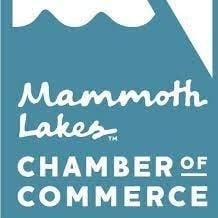By Deb Murphy
Southern Inyo Healthcare District’s Board of Directors held one of what will be a long series of meetings to begin dealing with the failure of Measure J, a parcel tax designed to pay off bankruptcy claims.
The measure fell short of the required 66-percent, plus one, requirement at the April 10 special election.
With a court hearing on the district’s bankruptcy plan, based on voter approval of the measure, at the end of May, board member Dick Fedchenko told those in attendance, “We can’t save the hospital as we know it. Our task now is to figure out how to handle the settlement.”
Board members Fedchenko and Jaqui Hickman have met with Ridgecrest Regional Hospital. “Ridgecrest and Northern Inyo have an interest, but they can’t make us whole,” explained Hickman.
The board’s and community’s frustration was evident. “What’s plan B?” asked board member Carma Roper. “We don’t know.”
Hickman was more direct. “People spent more money driving to workshops and campaigning against Measure J than they would have paid if J had passed,” she said of the $215 per parcel measure.
The simple, un-stated fact: regulations governing both hospitals and property-based taxes shoved the board into a corner. General obligation bonds, based on the value of the property, can’t be used to pay off bankruptcies; graduated parcel taxes are no longer legal. The most vital part of the hospital is the emergency room without which the rural health care clinic and skilled nursing facility cannot legally function. The ER is also the one department of the hospital that will probably never pay for itself.
Mono County’s solution is a Paramedic Plan, but that consumes 10-percent of the county’s general fund, according to Inyo Supervisor Matt Kingsley.
Fedchenko said the discussions with Ridgecrest are preliminary. “We’ll have new information in the next weeks,” he said.
Discover more from Sierra Wave: Eastern Sierra News - The Community's News
Subscribe to get the latest posts sent to your email.





















IF ” graduated parcel taxes no longer legal”…. then why aren’t the DW&P, BLM, US Park Service and the US Forrest Service paying the same rate per acre as I am? This is the issue that the Southern Inyo Health Care District and the County of Inyo have failed to deal with. The federal government spends huge amounts of money to “attract” millions of visitors to this county every year, yet they do not pay property taxes proportional to the impact those visitations have. The few hundred property owners that constitute the district will never be able to afford medical facilities to cover a highway with 100k cars a weekend going through.
The moronic political error of campaigning this proposition as a threat to the voters, “vote for this or you’ll pay more with no hospital”, was also a significant factor in the failure of the prop to pass.
Please, Ms. Murphy, how about a little fact checking? Matt Kingsley was dead wrong about the Paramedic Services in Mono County. It’s more like $4.2 million out of a total budget of $111.8 million. And then there is Jaque Hickman’s berating of voters for driving to the meetings and running a very modest opposition campaign. Maybe it will eventually dawn on her that we aren’t a bunch of cheapskates, but are rather appalled at the constantly escalating debt burden that this Board and its predecessors have been running up. Matt, you need a lesson in budget reading; Jaque, you need a lesson in the First Amendment.
Apologies, Matt! I now see the General Fund numbers. I’m not sure what relevance this has to our situation, however, since Mono requires a larger paramedic program than Southern Inyo would.
For what it is worth, Mono County’s paramedic program doesn’t cover the County south of Mammoth Lakes / Crowley. So no service to Tom’s Place, Sunny Slopes, Swall, Paradise, not to mention the Tri Valley communities. And without the volume of calls coming out of Mammoth Lakes the program would be…even less logical than it is now as a policy matter. Especially when it comes to the idea of sound fiscal management.